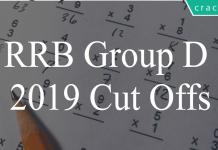Reasoning Questions for RRB NTPC Set-4 PDF
Download RRB NTPC Reasoning Questions PDF. Top 15 RRB NTPC Reasoning questions based on asked questions in previous exam papers very important for the Railway NTPC exam.
Download Reasoning Questions for RRB NTPC set-4 PDF
Take a free mock test for RRB NTPC
Download RRB NTPC Previous Papers PDF
Question 1: Choose the bird which does not belong to the group.
a) Peacock
b) Eagle
c) Ostrich
d) Hen
Question 2: Teacher is related to Class in the same way Driver is related to
a) Brake
b) Wheel
c) Parts
d) Vehicle
Question 3: S is mother of T. T is husband of J. N is son of J. Z is father-in-law of J. K is brother of N. How K is related to Z ?
a) Son
b) Brother
c) Nephew
d) Uncle
e) None of these
Instructions
<p “=””>Study the given information carefully and answer the given questions :
A is the mother of B. B is the sister of C. D is the son of C. E is the brother of D. F is the mother of E. H has only two children – B and C.
Question 4: Who is the mother of G ?
a) C
b) B
c) F
d) Either B or F
e) Either C or F
Instructions
Study the following information and answer these questions :
(A) P, Q, R, S, T, U and V are sitting in a circle facing the centre.
(B) S who is second to the right of R is not to the immediate right of V.
(C) U is not between V and T.
(D) P is between R and Q.
Question 5: If Q and R interchange places so as T and V, then
a) S is third to the right of R
b) T is second to the left of R
c) Q is fourth to the right of T
d) V is third to the right of U
e) None of these
RRB NTPC Previous Papers [Download PDF]
Question 6: Which of the following is correct ?
(i) V is third to the left of R.
(ii) U is between S and V.
(iii) Q is to the immediate left of P
a) Only (i)
b) Only (ii)
c) Only (iii)
d) Only (ii) and (iii)
e) None of these
Instructions
For the next four questions, &, ~, #, !, @ are used to denote inequalities as explained below.
X ~ Y implies X “is not less than” Y
X ! Y implies X “is not more than” Y
X * Y implies X “is neither less than nor equal to” Y
X + Y implies X “is neither more than nor equal to” Y
X ? Y implies X “is neither less than nor more than” Y
In each question, assuming that the statements are correct, analyze which of the conclusions are implied. Select from options a to e accordingly:
Question 7: Statements A!B, B*C, D!C
Conclusions 1) D*B 2) A+C
a) Conclusion 1 is implied from the statements but Conclusion 2 is not
b) Conclusion 2 is implied from the statements but Conclusion 1 is not
c) Either Conclusion 1 or Conclusion 2 is implied from the statements.
d) Neither conclusion 1 nor conclusion 2 is implied from the statements.
e) Both conclusion 1 and conclusion 2 are implied from the statements.
Question 8: Statements A?B, B~C
Conclusions 1) C+A 2) C?A
a) Conclusion 1 is implied from the statements but Conclusion 2 is not
b) Conclusion 2 is implied from the statements but Conclusion 1 is not
c) Either Conclusion 1 or Conclusion 2 is implied from the statements.
d) Neither conclusion 1 nor conclusion 2 is implied from the statements.
e) Both conclusion 1 and conclusion 2 are implied from the statements.
Instructions
In a particular encryption, alphabets are coded into numbers and symbols as shown below, subject to some rules:
Rules: 1) If both the first and the fourth elements are vowels, they are coded as +
2) If the third element is a vowel, the first element is coded as +
3) If the last element is a consonant, the last but one element is coded as +
In all other cases, the alphabets are coded as shown above.
Question 9: How is SPADE coded?
a) #!@$3
b) +0!#3
c) #!@+3
d) +!@+3
e) None of the above
Instructions
In each question below is given a group of letters followed by four combinations of digits/symbols numbered a:, b:, c: and d:. You have to find out which of the combinations correctly represents the group of letters based on the following coding system and the conditions that follow arid mark the number of that combination as your answer. If none of the combinations correctly repreients the group of letters, marks e: i.e. ‘None of these’ as your answer. Conditions
(i) If1the first letter is a vowel and the last letter is a consonant both are to be coded as *.
(ii) If the first letter Is a consonant and the last letter is a vowel their codes are to be interchanged.
(iii) If both the first and the last letters are vowels both are to be coded as the first letter.
Question 10: IFNVDE
a) 26%#92
b) 46%#92
c) 46%#94
d) *6%#9*
e) None of these
Instructions
In a making decisions about important questions it is desirable to be able to distinguish between ‘strong’ arguments and ‘weak’ arguments. ‘strong’ arguments are those which are both important and directly related to the question ‘Weak’ argument are those which are of minor importance and also may not be directly related to the question or may be related to a trivial aspect of the question
Each question below is followed by three arguments numbered (A), (B) and (C).You have to decide which of the argument is a ‘strong’ argument and which is a ‘Weak’ argument.
Question 11: Statement:Should there be a cap on drawing ground water for irrigation purpose in India ?
Arguments:(A) No, irrigation is of prime importance for food production in India and it is heavily dependent on groundwater in many parts of the country.
(B)Yes, water tables have gone down to alarmingly low levels in some parts of the country where irrigation is primarily dependent on groundwater which may lead to serious environmental consequences
(C)Yes India just cannot afford to draw groundwater any further as the international agencies have cautioned India against it
a) Only (A) and (B) are strong
b) Only (B) and (C) are strong
c) Only (A) and (C) are strong
d) All (A), (B) and (C) are strong
e) None of these
Question 12: Statements:Should there be a complete ban on setting up thermal power plants in India ?
Arguments:(A)Yes this is the only way to arrest further addition to environmental pollution
(B)No, there is a huge shortage of electricity in most parts of the country and hence generation of electricity needs to be augmented
(C)No, many developed countries continue to set up thermal power plants in their countries
a) None is strong
b) Only (A) is strong
c) Only (B) is strong
d) Only (C) is strong
e) Only either (A) or (B) is strong
Instructions
In each of question below is given a statement followed by two courses of action numbered I and II. A course of action is a step or administrative decision to be taken for improvement, follow-up or further action in regard to the problem, policy etc: On the basis of the information given in the statement to be true, then decide which of the suggested courses of action logically follow(s) for pursuing. Give your answer as—
a: if only I follows
b: if only II follows
c: if either I or II follows
d: if neither I nor II follows
e: if both I and II follow
Question 13: Statement: The meteorological department has forecasted that this year, there will be good monsoon season for the tenth consecutive year, resulting in the growth of bumper crop.
Course of action:
I. Government should off load some portion of the foodgrains in warehouses before harvesting.
II. Government should immediately try to provide chemical fertilisers to the formers.
a) if only I follows
b) if only II follows
c) if either I or II follows
d) if neither I nor II follows
e) if both I and II follow
Instructions
<p “=””>In making decisions about important questions, it is desirable to be able to distinguish between ‘strong’ arguments and ‘weak’ arguments. ‘Strong’ arguments are those which are both important and directly related to the question. ‘Weak’ arguments are those which are of minor importance and also may not be directly related to the question or may be related to a trivial aspect of the question.
Instructions : In each of the following a question is followed by two arguments numbered I and II.
You have to decide which argument is strong and which argument is weak.
Give answer a: if only argument I is strong.
Give answer b: if only argument II is strong.
Give answer c: if either argument I or II is strong.
Give answer d: if neither argument I nor II is strong.
Give answer e: if both the arguments I and II are strong.
Question 14: Statement : Should mutual funds be brought under stricter Government control ? Arguments :
I. Yes, that is one of the ways to protect the interest of the investors.
II. No. Stricter Government controls are likey to be counterproductive.
a) if only argument I is strong.
b) if only argument II is strong.
c) if either argument I or II is strong.
d) if neither argument I nor II is strong.
e) if both the arguments I and II are strong.
Download General Science Notes PDF
Instructions
Study the following arrangement carefully and answer the
questions given below :
1 5 8 4 2 1 5 2 3 4 5 6 7 8 9 5 1 4 1 5 6 8 7 4
Question 15: How many such 5s are there in the above arrangement. each of which is immediately preceded by an odd digit and immediately followed by an even digit ?
a) None-
b) One
c) Two
d) Three
e) More than three
Answers & Solutions:
1) Answer (B)
2) Answer (D)
3) Answer (E)
4) Answer (D)
EndGroup:
5) Answer (E)
6) Answer (C)
7) Answer (D)
A $ \leq B > C \geq D $
8) Answer (C)
A = B $ \geq C $
9) Answer (B)
Rule 2 applies as A is a vowel.
10) Answer (A)
11) Answer (A)
12) Answer (C)
13) Answer (A)
14) Answer (D)
15) Answer (D)
adrotate banner=”28″]
DOWNLOAD APP FOR RRB FREE MOCKS
We hope this Reasoning Questions pdf for RRB NTPC Exam will be highly useful for your Preparation.






